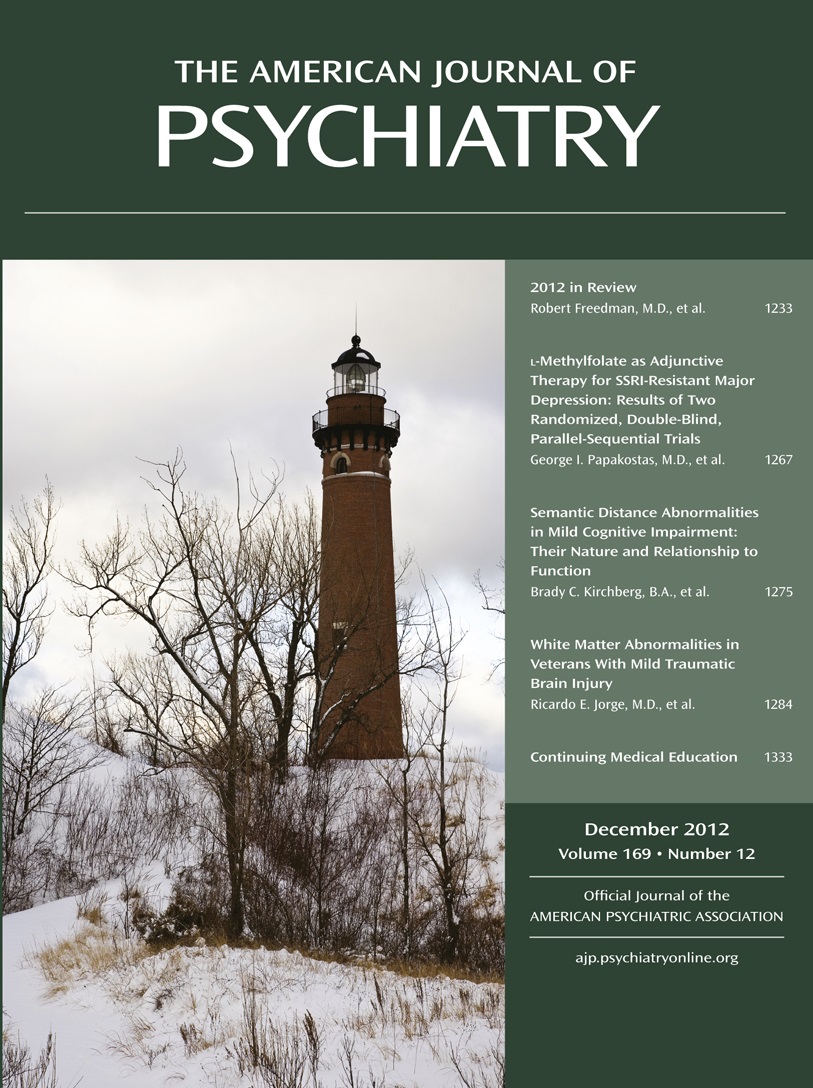Funding Information
Dr. Papakostas has received research support from, served as a consultant or speaker for, or received honoraria for CME activities for Abbott, AstraZeneca, Brainsway, Bristol-Myers Squibb, Cephalon, Dey Pharma, Eli Lilly, Forest, GlaxoSmithKline, Lundbeck, NIMH, Otsuka, Pamlab, Ridge Diagnostics, Roche, Takeda, Theracos, and Sunovion. Dr. Shelton has received research support or served as a consultant for Bristol-Myers Squibb, Eli Lilly, Cyberonics, Elan, Euthymics Bioscience, Forest, Janssen Pharmaceutica, Medtronic, Novartis, Otsuka, Pamlab, Pfizer, Repligen, Ridge Diagnostics, Takeda Pharmaceuticals, and St. Jude Medical. Dr. Zajecka has received research support from or served as a consultant, adviser, or speaker for Abbott, AstraZeneca, Boehringer-Ingelheim, Bristol-Myers Squibb, Cyberonics, Eli Lilly, Forest, GlaxoSmithKline, Hoffman-LaRoche, McNeil, Novartis, Otsuka, Pamlab, Pfizer, Shire, and Takeda. Dr. Schoenfeld is a patent holder for the sequential parallel design used in this study; the patent is owned by his employer, Massachusetts General Hospital. Dr. Pencina has served as a consultant for Pamlab and RCT Logic. Ms. Meisner has served as a consultant for Massachusetts General Hospital and Pamlab, has received a grant from the National Heart, Lung and Blood Institute, and has received funds from grants at the Harvard School of Public Health. Dr. Bottiglieri has received research support from and has served as a consultant for Pamlab, has served as the chairman of the advisory board for Methylation Sciences, and holds stock options in Methylation Sciences. Dr. Nelson has received research support from AstraZeneca, Eli Lilly, GlaxoSmithKline, and Pamlab. Dr. Mischoulon has received research support or honoraria for consulting, speaking, and writing from the Bowman Family Foundation, Bristol-Myers Squibb, Cederroth, FisherWallace, Ganeden, Lichtwer Pharma, Nordic Naturals, and Pamlab and has received royalties from Back Bay Scientific and Lippincott Williams & Wilkins. Dr. Alpert has received research support from or served as an adviser, consultant, or speaker for Abbott, Alkermes, APA, Lichtwer Pharma, Lorex, Aspect Medical Systems, AstraZeneca, Bristol-Myers Squibb, Cephalon, Cyberonics, Eli Lilly, Forest, GlaxoSmithkline, J & J Pharmaceuticals, MGH Psychiatry Academy/Reed Medical Education, MGH Psychiatry Academy/Primedia, Novartis, Organon, Pamlab, Pfizer, Pharmavite, Roche, Sanofi/Synthelabo, Solvay, Wyeth-Ayerst, and Xian-Janssen and has received editorial fees from Belvoir Publishing. Dr. Barbee has received research support from or served as a speaker for AstraZeneca, Bristol-Myers Squibb, Dey Pharmaceuticals, Eli Lilly, Forest, Merck, Pfizer, and Sheppard Pratt Health System and has done forensic consulting work for various attorneys. Dr. Zisook has received research support from Pamlab. Dr. Fava has received research support from Abbott, Alkermes, Aspect Medical Systems, AstraZeneca, BioResearch, BrainCells, Bristol-Myers Squibb, Cephalon, BioPharma, Clinical Trials Solutions, Clintara, Covidien, Eli Lilly, EnVivo Pharmaceuticals, Euthymics Bioscience, Forest, Ganeden Biotech, GlaxoSmithKline, Icon Clinical Research, i3 Innovus, Johnson & Johnson Pharmaceutical Research and Development, Lichtwer Pharma, Lorex Pharmaceuticals, NARSAD, National Center for Complementary and Alternative Medicine, National Institute on Drug Abuse, NIMH, Novartis, Organon, Pamlab, Pfizer, Pharmavite, Photothera, Roche, RCT Logic, Sanofi-Aventis, Shire, Solvay, Synthelabo, and Wyeth-Ayerst; he has served as an adviser or consultant (unpaid except as otherwise noted) for Abbott Laboratories, Affectis Pharmaceuticals, Alkermes, Amarin Pharma, Aspect Medical Systems, AstraZeneca, Auspex Pharmaceuticals, Bayer, Best Practice Project Management, BioMarin Pharmaceuticals, Biovail, BrainCells, Bristol-Myers Squibb, CeNeRx BioPharma, Cephalon, Clinical Trials Solutions, CNS Response, Compellis Pharmaceuticals, Cypress Pharmaceutical, DiagnoSearch Life Sciences, Dinippon Sumitomo Pharma, Dov Pharmaceuticals, Edgemont Pharmaceuticals, Eisai, Eli Lilly, ePharmaSolutions, EPIX Pharmaceuticals, Euthymics Bioscience, Fabre-Kramer, Forest, GenOmind, GlaxoSmithKline, Grunenthal, i3 Innovus, Janssen Pharmaceutica, Jazz Pharmaceuticals, Johnson & Johnson Pharmaceutical Research and Development (remunerated), Knoll Pharmaceuticals, Labopharm, Lorex Pharmaceuticals, Lundbeck, MedAvante, Merck, MSI Methylation Sciences, Naurex, Neuronetics, Novartis, Nutrition 21, Orexigen Therapeutics, Organon, Otsuka, Pamlab, Pfizer, PharmaStar, Pharmavite, PharmoRx Therapeutics, Precision Human Biolaboratory, Prexa Pharmaceuticals, Puretech Ventures, PsychoGenics, Psylin Neurosciences, Rexahn Pharmaceuticals, Ridge Diagnostics, Roche, RCT Logic, Sanofi-Aventis, Sepracor, Servier Laboratories, Schering-Plough, Solvay, Somaxon, Somerset Pharmaceuticals, Sunovion, Synthelabo, Takeda, Tetragenex, TransForm Pharmaceuticals, Transcept Pharmaceuticals, and Vanda Pharmaceuticals; he has provided speaking/publishing (unpaid except as otherwise noted) for Adamed, Advanced Meeting Partners, APA, American Society of Clinical Psychopharmacology, AstraZeneca, Belvoir Media Group (remunerated), Boehringer Ingelheim, Bristol-Myers Squibb, Cephalon, CME Institute/Physicians Postgraduate Press (remunerated), Eli Lilly, Forest, GlaxoSmithKline, Imedex, MGH Psychiatry Academy/Primedia, MGH Psychiatry Academy/Reed Elsevier (remunerated), Novartis, Organon, Pfizer, PharmaStar, United BioSource, and Wyeth-Ayerst; he has equity holdings in Compellis; he is a patent holder for the sequential parallel design used in this study (the patent is owned by Massachusetts General Hospital) and has a patent application for a combination of ketamine and scopolamine in major depression; and he receives royalties from Lippincott Williams & Wilkins. The other authors report no financial relationships with commercial interests.Both trials were funded by Pamlab.



